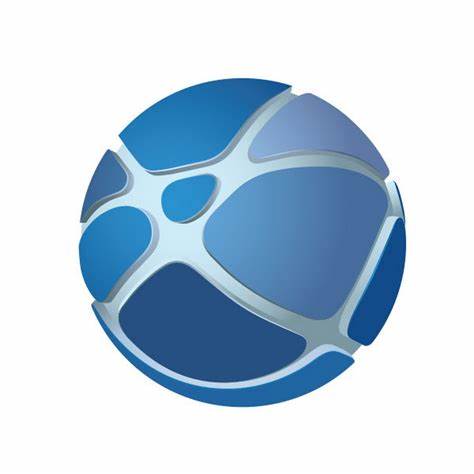Creating robust engineering programs is tough. There’s a lot of material to cover and seemingly endless skills to instill in your students. Many program creators have a tendency to want to do it all, but the most successful middle school and high school engineering programs have successfully met the following three goals:
Below, we’ve outlined why these goals matter in your students’ engineering education and why it’s important to fulfill them in high school engineering programs.
Goal 1: Students gain software-specific skills that prepare them for the postsecondary level and the workplace.
CAD software is like the Microsoft Office of engineering design — students are expected to be able to navigate these programs, and if they don’t have those skills, they’re going to struggle to complete even basic assignments. To really ensure that your students are ready for the rigors of
postsecondary education and the workplace, they need to get foundational knowledge about how CAD software works in their high school engineering programs. And that doesn’t happen overnight.
To make matters more complicated, there are multiple “correct” ways to approach each design, but some methods are much more efficient than others. So, for your students to learn design best practices, they need to spend a significant amount of time in the software and receive clear instructions on what the best methods are. The more exposure they have to the software in their high school engineering programs, the more advanced and efficient they’ll become — with years of practice comes mastery.
James Jepsen, CSWE and senior content manager at SolidProfessor, explains, “Think about it like using a scientific calculator. If you need to know what seven to the seventh power is, you can type in ‘7x7x7x7x7x7x7’ and get your answer. Or, you can use the exponent key to do it much quicker. As problems get more complex, it won’t be feasible to type in that long string of numbers, and you’ll be forced to find a more efficient way to get your answer.”
Goal 2: Engineering students are on track to pass their software certification exam.
Becoming certified in an engineering design software opens up more opportunities for your students, whether their next destination is a
postsecondary institution or the workforce. Here are just a few reasons why a CAD, CAM, or BIM software certification can make a difference in your students’ lives and should be included in high school engineering programs:
- Students gain a competitive advantage over their peers. As more and more high school students pursue a postsecondary degree after graduation, the competition to get into more selective schools increases. Every extracurricular activity, volunteer opportunity, and certification helps move your students through the admissions process. For some schools, students must apply to the college as well as its school of engineering. An industry certification shows reviewers that your students are equipped with the knowledge they need to be successful in a challenging engineering program.
- Students strengthen their software skills. In the process of studying for the certification exam, students gain even more competency. Exams are designed to test how efficient the engineering designer is, which challenges students to learn best practices.
- They can join the database of certified professionals. Many companies compile a list of every certified software user, which employers use to find new talent. So, simply becoming certified could result in a real job for some of your students down the road.
Your school and district reap rewards, as well. Depending on your state, you can actually earn money for your school and teachers based on how many students successfully pass their certification exam. In the process, your high school engineering programs will gain a reputation for graduating students who are well prepared for their next journey in life.
Goal 3: Teachers have a convenient resource to educate themselves about engineering design software.
As a teacher, you already do a lot. From grading countless assignments to creating lesson plans, managing parents, and reigning in rowdy students, your days are already full. And that’s not even mentioning your core responsibility: teaching. So why would you spend precious time on professional development?
Read more: SolidProfessor can now integrate with your learning management system, allowing you to automate the grading process and easily see how your students are performing!
First and foremost, states require educators to complete a certain number of continuing education units, or CEUs, to retain their teaching license. The number of CEUs a teacher must attain is set by the state that issued the license, and renewal requirements vary from one state to the next. To make matters even more complex, most states have a multi-tiered licensing structure in which incoming teachers receive “initial” licenses and more seasoned educators apply for an “advanced” or “professional” license. Each of these different types of licenses come with their own CEU requirements. Check out the
Teach Tomorrow website to find a breakdown of your state’s continuing education requirements for teachers.
Beyond CEU requirements,
Edutopia explains, “An inspiring and informed teacher is the most important school-related factor influencing student achievement.”
Generation Ready has done extensive research to analyze the effect of teacher professional development on student outcomes. It concluded, “The most powerful way to raise student achievement is through professional learning. More than ever before, students need effective teaching if they are to develop the higher order thinking skills they will need to be career and college ready in the 21st century.” You have an immense impact on your students, and the more you bring to the table, the better they’ll perform.
Read more: 13 Professional Development Grants for Teachers
But it’s not just about requirements and student achievement — professional development is a great way to keep your passion for teaching burning bright, and it can make you a more desirable employee. It shows current and future employers that you’re dedicated to your craft and you’re up-to-date on new advances in the industry.
























